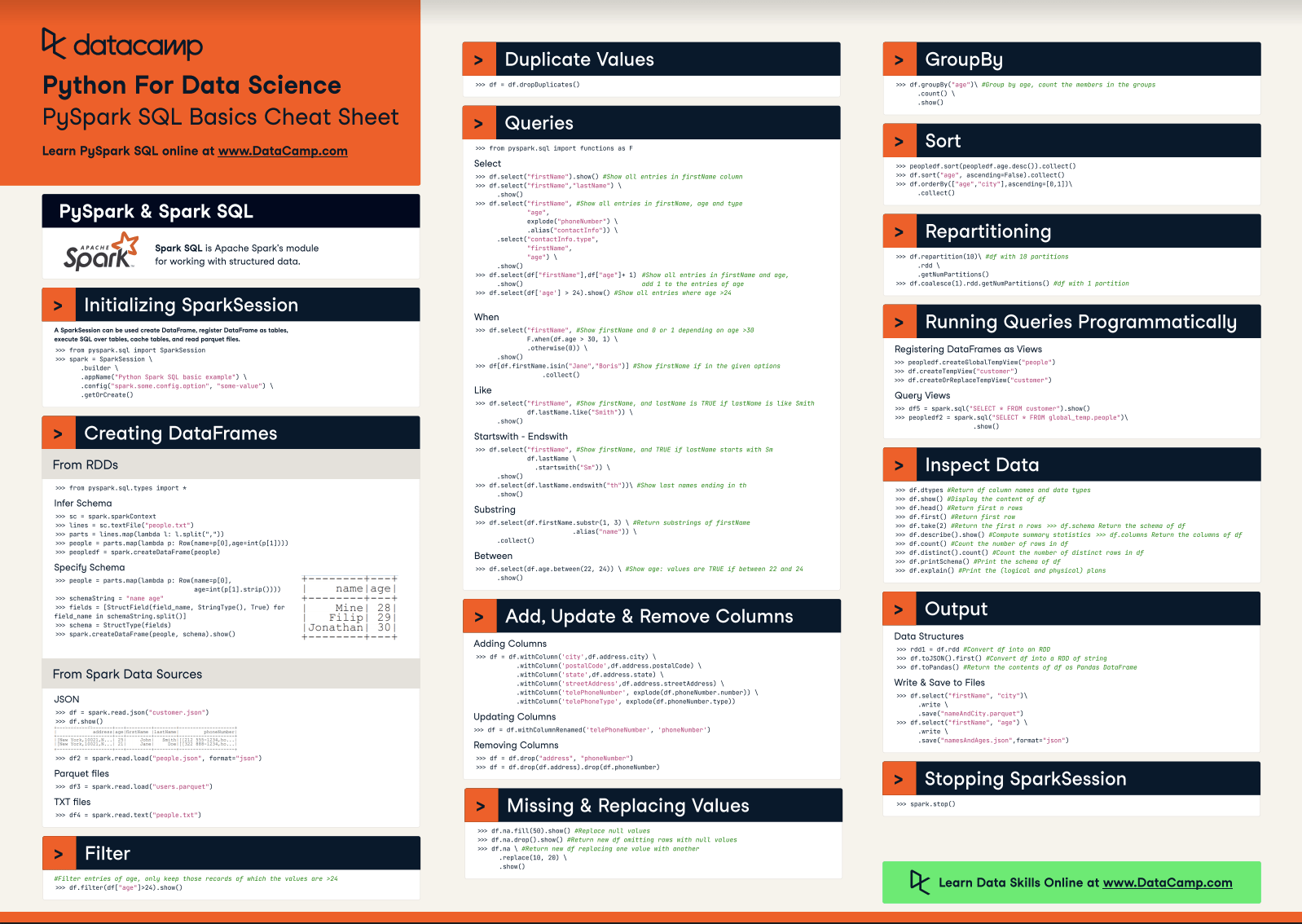PySpark Cheat Sheet: Spark DataFrames in Python
This PySpark SQL cheat sheet is your handy companion to Apache Spark DataFrames in Python and includes code samples.
Jul 2021 · 5 min read
RelatedSee MoreSee More
tutorial
How to Convert a List to a String in Python
Learn how to convert a list to a string in Python in this quick tutorial.
Adel Nehme
tutorial
A Comprehensive Tutorial on Optical Character Recognition (OCR) in Python With Pytesseract
Master the fundamentals of optical character recognition in OCR with PyTesseract and OpenCV.
Bex Tuychiev
11 min
tutorial
Encapsulation in Python Object-Oriented Programming: A Comprehensive Guide
Learn the fundamentals of implementing encapsulation in Python object-oriented programming.
Bex Tuychiev
11 min
tutorial
Snowflake Snowpark: A Comprehensive Introduction
Take the first steps to master in-database machine learning using Snowflake Snowpark.
Bex Tuychiev
19 min
tutorial
Python KeyError Exceptions and How to Fix Them
Learn key techniques such as exception handling and error prevention to handle the KeyError exception in Python effectively.
Javier Canales Luna
6 min
code-along
Full Stack Data Engineering with Python
In this session, you'll see a full data workflow using some LIGO gravitational wave data (no physics knowledge required). You'll see how to work with HDF5 files, clean and analyze time series data, and visualize the results.
Blenda Guedes

 Spark SGlL is Apache Spark's module for working with structured data.
Spark SGlL is Apache Spark's module for working with structured data.